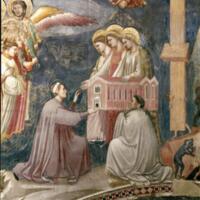Browse Exhibits (2 total)
The Art of Religious Corruption

Religion and art interwine, one rarely exists with out some form of the other. In it's early stages, art would be used as a way to teach and inspire religious awe. Churches served as both religious and political authorities, tasked with prioritizing the pursuit of God and spiritual salvation above all else. As populations grow, and power and wealth become more alluring so does the corruption of the church. Where there is corruption, there is resistance. Artists across centuries have used their skills to voice their disgust and displeasure of the actions of those who claim to act with God's interest.
This exhibit includes images of nudity and images that may be offensive to some audiences but that are important in the conversation of art and church corruption. These images are specifically included in the Art on the Streets page
Papal Corruption in Medieval Italy Through Dante's Divine Comedy (Theodoric Greenleaf)

Papal Corruption in the Time of Dante
For as long as there have been positions of power, there have been those who seek to abuse that power. Thankfully, as long as there has been corruption, there has also been those who seek to reveal and criticize that corruption that they might affect change. Perhaps the most influential, or, at the very least, well-known, critic of corruption in the Christian church is Dante Alighieri (1265-1321), who experienced a great deal of political upheaval and accompanying religious turmoil due to his participation in the Guelph-Ghibelline conflict, and later, the White-Black split of the Guelph party. When Dante wrote his book posthumously titled The Divine Comedy during his permanent exile from Florence, he included a variety of church officials, as well as people he knew either personally or of by way of his Florentine roots, and criticized them heavily for their misdeeds, often placing them in one of the circles of Hell. Examination of this medieval work and the figures within not only reveals the prevalence of moral corruption in the church for the purpose of financial gain despite the highly religious culture of medieval Italy, but also, through the re-interpretation of its passages, allows for the demonstration of the continuation of papal corruption due to greed.